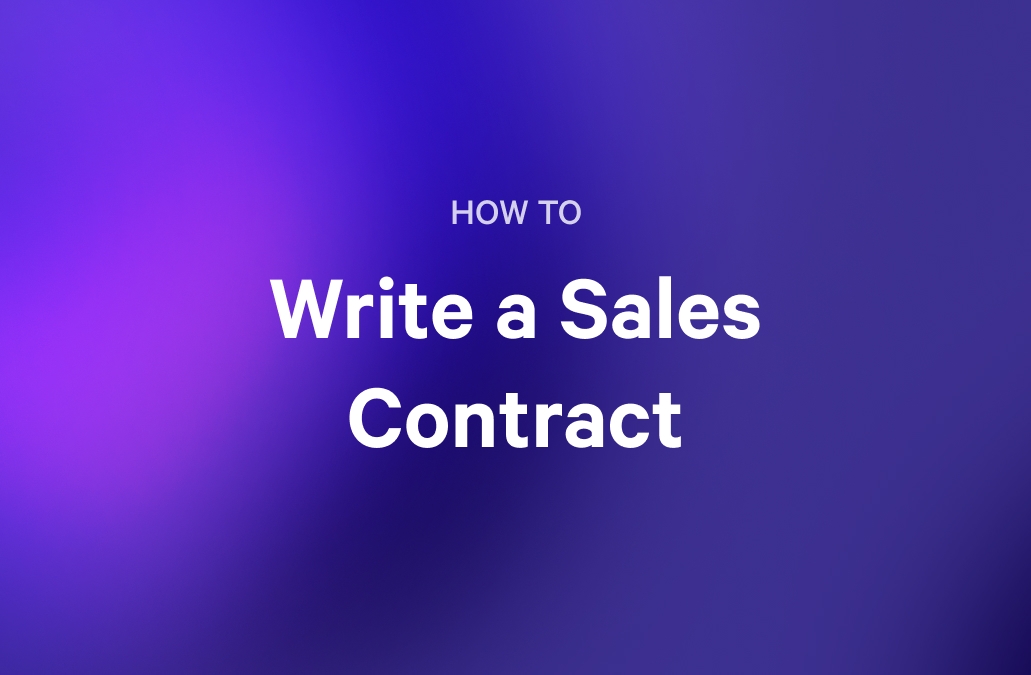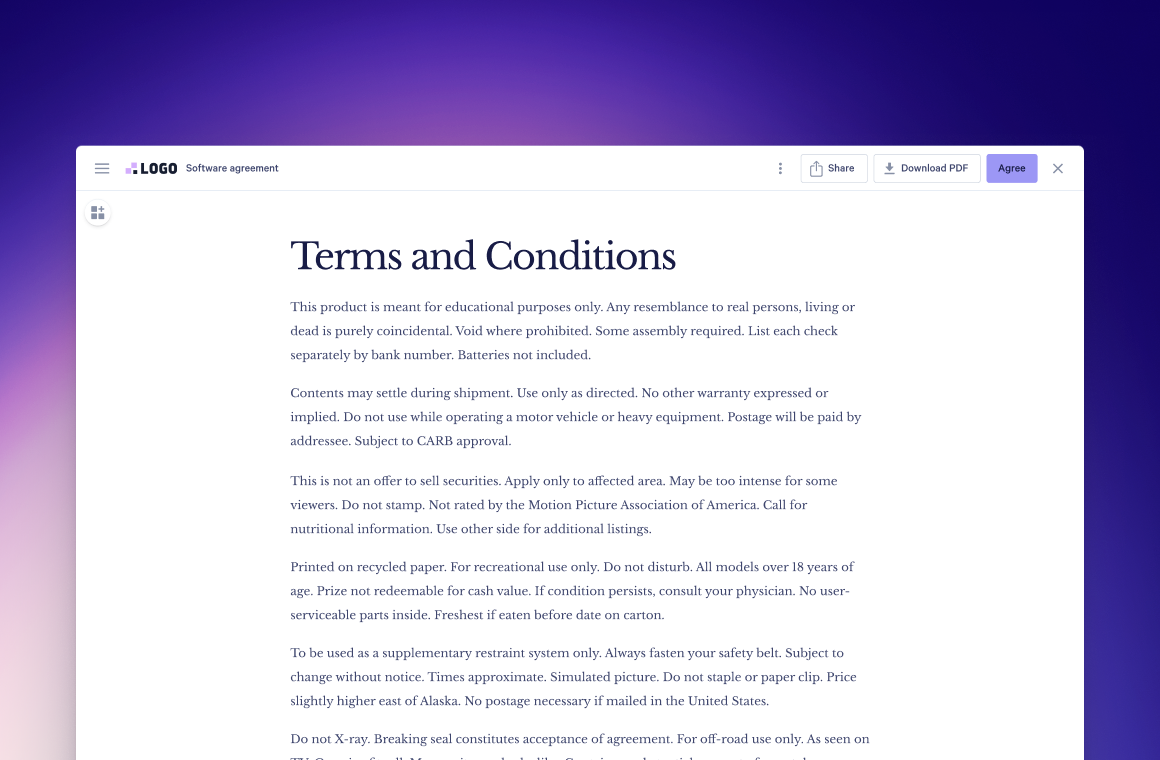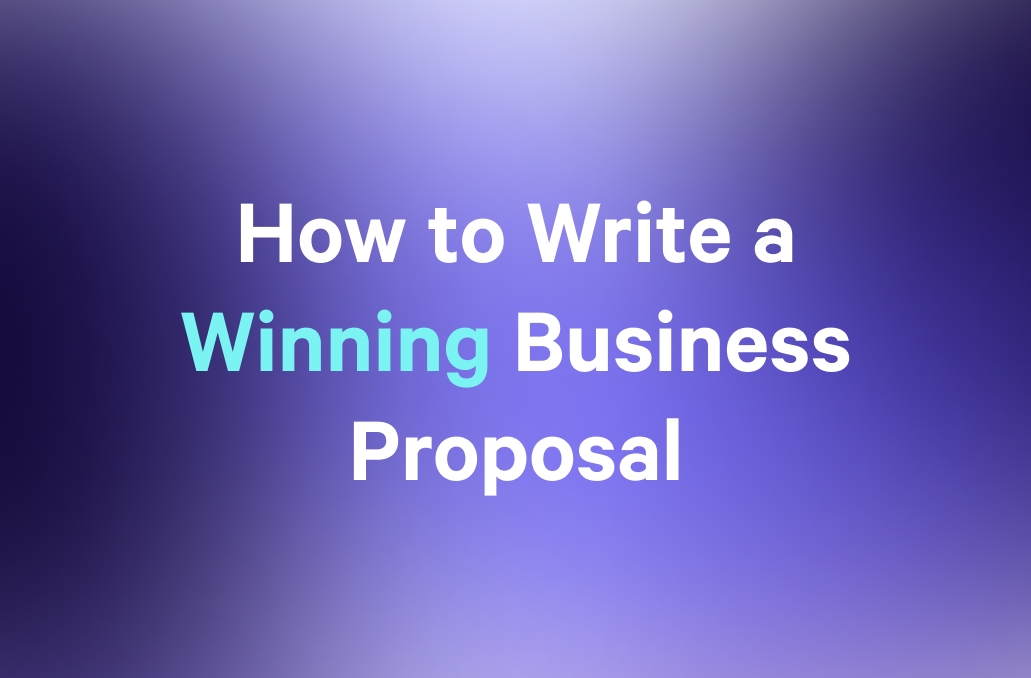Writing a contract proposal used to take 6+ hours, require clunky templates, and endless back-and-forth approvals. Most sales professionals lose hours every week building these critical documents—only to worry whether they’ve missed critical terms or risked losing the deal.
Here’s the truth: You don’t need to be a lawyer or waste hours revising proposals to build ones that close deals fast and protect your interests.
With the right tools and a proven strategy, you can create proposals that impress clients, fast-track approvals, and win more deals—without the usual headaches.
Key takeaways
- Contract proposals combine sales persuasion with legal requirements, serving as both a business tool and a binding agreement framework.
- A strong executive summary and clear problem statement demonstrate a deep understanding of client challenges and set the foundation for your solution.
- Crystal-clear deliverables, timelines, and pricing structures prevent misaligned expectations and build trust throughout the negotiation process.
- Terms and conditions must balance legal protection with readable language to ensure both parties understand their commitments.
- Using templates and digital tools like Qwilr streamlines the proposal process while maintaining professionalism and tracking engagement.
What is a contract proposal?
A contract proposal is a formal business document that outlines the terms, conditions, and scope of work for a potential agreement between two or more parties. It’s both a sales tool and a legal framework that details what each party brings to the table and expects in return.
Unlike a standard business proposal, a contract proposal includes legally binding elements that can be directly converted into a final agreement once approved.
Psst: Check out the difference between proposals vs contracts
Key components of a contract proposal
Creating a winning contract proposal requires building a compelling narrative that guides decision-makers through your solution. Here are seven elements to include when outlining your proposal.
Executive summary
An executive summary presents your solution to the client's needs, highlights key benefits, and provides a clear timeline for implementation.
With 74% of contract signers being executives, this section needs to be concise—no more than one page—so decision-makers can quickly grasp the key takeaways without sifting through details.
When writing an executive summary, frame it around what matters most to your reader. Ask: What keeps them up at night? What wins will make them look good?
https://L.com/blog/business-proposal-examples/While it appears first, write it last—this way, you can pull in the strongest insights from your full proposal for maximum impact.
Problem statement
Your contract proposal is more credible when you show a deep understanding of your client’s challenges. Prove you’ve done your research by focusing on their biggest concerns.
Start with the most pressing issues they shared during discovery. Use specific examples and data points to show you’ve been listening.
Explain these challenges in terms of business impact—lost revenue, wasted time, or missed opportunities—so the client feels the urgency to act.
When possible, quantify the cost of inaction (especially in software proposals)—because numbers don’t lie, and nothing creates urgency like a clear dollar amount.
Proposed solution
Show them exactly how your solution bridges the gap between their biggest challenges and their ideal outcomes.
Map specific features to concrete benefits. Instead of "AI-powered analytics," say "AI-powered analytics that cut reporting time in half, so your team can focus on strategy, not spreadsheets."
Deliverables and timelines
Every contract proposal needs crystal-clear deliverables and realistic timelines—otherwise, you risk misaligned expectations, frustrated clients, and projects that spiral out of control.
Your deliverables section should specify exactly what products, services, or outcomes you'll provide. For instance, in a UX design proposal, instead of listing in "website development," specify "design mockups, front-end coding, and user testing" as separate deliverables.
The timeline portion maps out when your team completes each deliverable, ensuring alignment with stakeholders and preventing last-minute scrambles.
Create a realistic schedule with proposal software like Qwilr for dependencies, review cycles, and potential hurdles.

Pricing structure
Break down all pricing components into digestible segments—think transparent tables, side-by-side comparisons, or tiered plans with clear benefits (like those in Qwilr).
Include any variables affecting final costs, like the number of users, implementation fees, or optional add-ons. Be direct about payment terms, schedules, and any volume discounts.
Consider presenting multiple pricing tiers with a clear "sweet spot" option that most clients choose—anchoring value while guiding them to the best-fit solution.
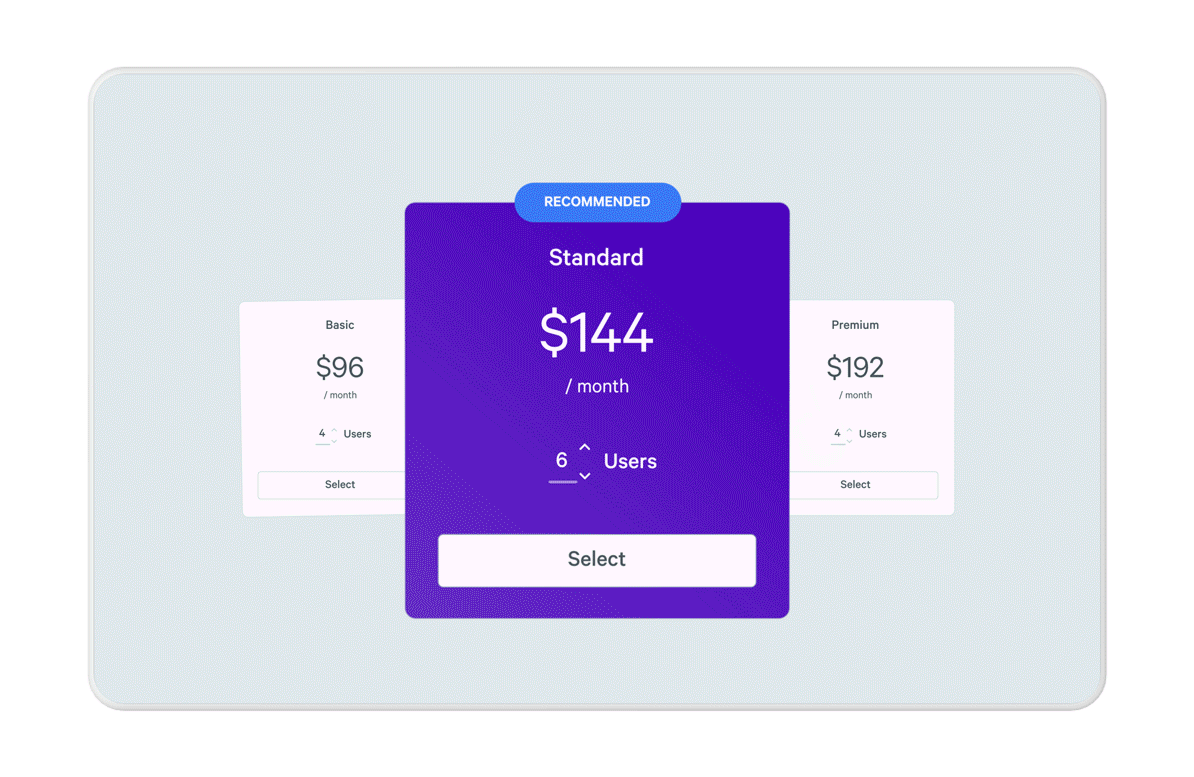
Terms and conditions
The terms and conditions section forms your contract proposal's legal backbone, protecting both parties throughout the engagement.
Start with clear payment terms—when payments are due, accepted methods, and any late payment policies. Define what happens if either party needs to modify or terminate the agreement.
Include specific conditions about intellectual property rights, confidentiality requirements, and any limitations of liability. Address potential scenarios like project delays or scope changes.
Keep language straightforward while ensuring all critical legal elements are covered. This balance helps clients understand their commitments without getting lost in complex legalese.

Include plain-text agreements alongside interactive Qwilr proposals
Call to action
Rather than ending with a vague "let us know if you have questions," give prospects a clear path forward. Specify exactly what happens after they sign—like click below to sign, and within 24 hours, we’ll kick off onboarding with a dedicated account manager.
Include multiple ways to move forward because some clients move fast, while others need one last conversation to feel confident.
Keep momentum by making the response process frictionless—use instant e-signatures, pre-scheduled calendar links, and a one-click "Let’s Talk" button to eliminate hesitation.

Create a contract proposal template with Qwilr
Proposal templates help you get started quickly, so you can focus on what matters—connecting with your prospect.
Qwilr's templates include sections covering everything from executive summaries to payment terms. Clear prompts in each section ensure you include all critical details.
Choose from a range of professional templates to get a solid start.
Make it yours by dropping in your brand colors, tweaking sections to match your deal size, and adding digital signatures for faster approvals.

With integrated e-signature functionality, your prospects can accept and sign the contract proposal and/or the plain-text formal agreement you send alongside. And an added bonus? QwilrPay means you can get paid instantly, however you’d like, all from one document.
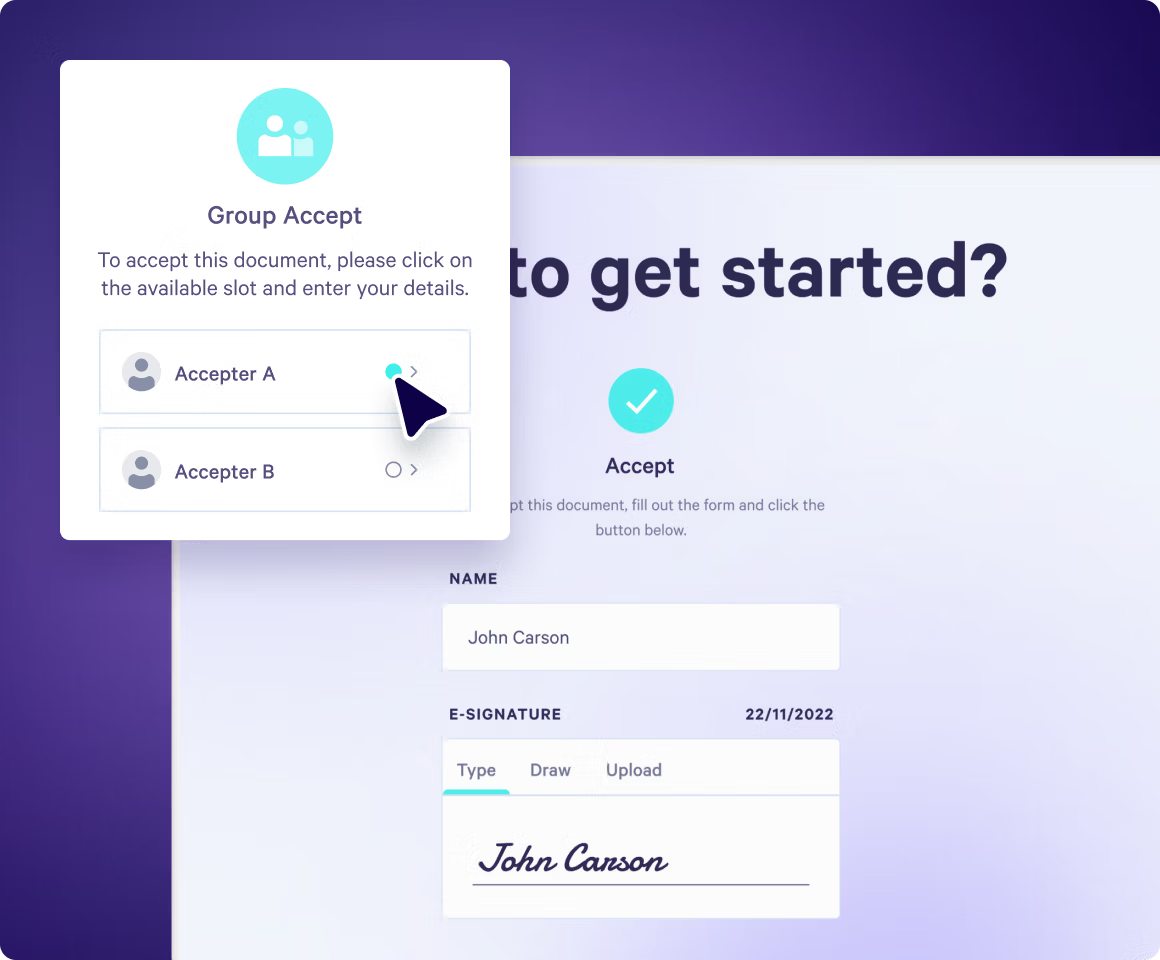
Qwilr analytics tracks buyer engagement on each of your proposals, including which section prospects engage with most, helping you follow up at the right time—especially when decision-makers review your proposal. You’ll get real-time notifications as buyers engage with your proposal, and if the acceptance proposal is stalled.

Simplify contract proposals with Qwilr
Creating strong contract proposals doesn’t have to be difficult. With the right template, clear sections, and a smart strategy, you can create documents that protect your interests and close deals faster.
Qwilr turns your proposals into dynamic sales tools with automated approvals and real-time analytics. Try it out for free and see how it helps you win more business. Get a free 14-day trial—no strings attached.
About the author

Kiran Shahid|Content Marketing Strategist
Kiran is a content marketing strategist with over nine years of experience creating research-driven content for B2B SaaS companies like HubSpot, Sprout Social, and Zapier. Her expertise in SEO, in-depth research, and data analysis allow her to create thought leadership for topics like AI, sales, productivity, content marketing, and ecommerce. When not writing, you can find her trying new foods and booking her next travel adventure."
